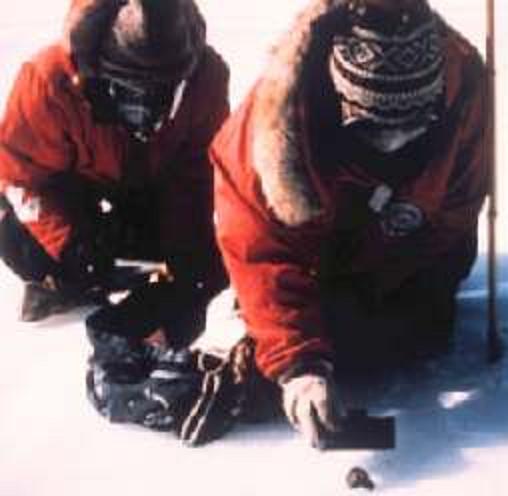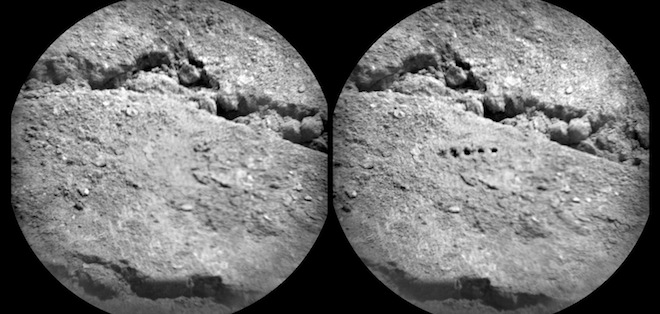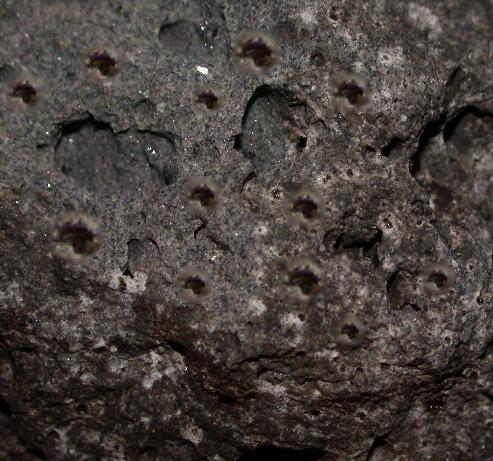 The Apollo proponents insist that the Apollo astronauts would have brought back rocks that they claim that they can only be found on the moon, and which do not exist on earth. They take it as an irrefutable proof that the astronauts landed on the moon. But this proof is not as solid as they claim it is, and this part explains why. |
 Two years before the first moon mission, Von Braun made a trip in Antarctica, so to collect lunar meteorites that could pass for lunar rocks. |
 Indeed, meteorites fallen into Antarctica, and found in the eighties, show the same composition as the lunar rocks that would have been brought back by the astronauts. |
 These meteorites could then be split into a certain number of "lunar" rocks that could be claimed to have been picked up on the moon by the astronauts. |
 The proponents of Apollo missions, aware of this argument, reply that the lunar rocks show little holes, called "zap pits", and which would have been made by colliding micrometeorites, which would not be the case with rocks produced by the previously described method. |
 In fact it's NASA itself which answered this argument, by showing a rock, it claims to be martian, on which Curiosity's laser would have pierced small holes; this stereoscopic view shows the rock before the holes are pierced, and the rock after. |
 So the answer to the presence of the zap pits is the laser which is able to produce them. The Apollo proponents still try a trick, by saying that curiosity's laser is a modern laser, and that nothing proves that lasers were able of a such feat in Apollo time. |
 But the lasers of the sixties were able of doing it; they were able to drill very thin holes into diamonds, and even to cut titanium, which is the hardest known metal. So piercing little holes in rock was certainly no problem for them. |
 Moreover, the holes we see in the so-called lunar samples seem to strangely always have the same size, like the micrometeorites striking them all had the same standard size... |
 ...Whereas it is more probable that, if micrometeorites were striking a rock on the moon, these micrometeorites would have different sizes, and we would consequently see different sized holes, like on this photocomposition, on which holes of various sizes have been added. |
 Moreover, only the rocks which are analyzed need to be authentic; it was possible for NASA to add fake rocks to the stock of lunar rocks which would have been brought back by the astronauts, to increase their volume, provided that it would make sure that the latter would never be analyzed, like this lunar rock of the dutch museum, of which NASA was probably not figuring that experts would some day have the idea of analyzing it...to finally realize that it was vulgar petrified wood! |
 There is even better: Recently, australian geologists have found, in an australian area rich in minerals, a mineral which has the same structure as the rocks which would have been brought back by the astronauts: This means that it is possible to find directly on earth "lunar" rocks. How much time has NASA been aware of the existence of this mineral on earth? This probably allowed it to increase its stock of "real" lunar rocks, and to give more ones to be analyzed by independent laboratories. |